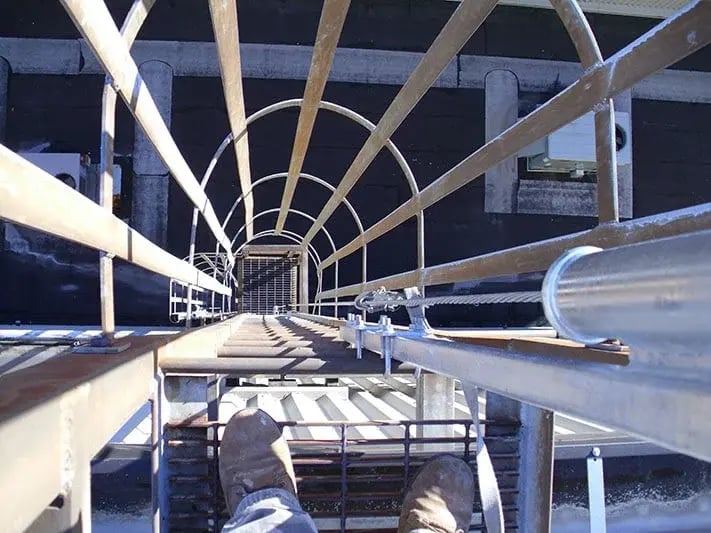Refinery
The miles of piping and pipe racks associated with oil and gas refineries are in need of constant repair, maintenance, painting, and pipe re-routing, exposing workers to fall hazards when adequate fall protection is not in place. Most of this work is done at heights, with few or no structural elements overhead from which to install fall protection. Although some some sections of pipe rack require regular, routine maintenance and inspection, your refinery may also have sections of pipe that are only visited every ten years. As a safety director, how do you balance OSHA compliance and protection of maintenance personnel with the need to provide cost effective fall protection for enormous lengths of exposed pipe?

Fall Protection Solutions
Design Considerations
Refinery pipe rack systems present miles of elevated, tiered, and compressed walking surfaces that are best protected with horizontal lifeline systems, or in some instances, beam gliders that attach to the structure supporting the racks. Because the top tier of a refinery pipe rack system lacks necessary overhead structure to attach a horizontal lifeline for fall arrest, support beams must also be fabricated and installed. Great care must also be taken to provide safe footing in refinery areas prone to leaks.
Most refineries also have areas requiring infrequent maintenance that make installation of a permanent fall arrest impractical or economically unfeasible. In these areas, choker cable tie off systems may be an acceptable, cost-effective alternative to a permanent fall protection system.
Our years of experience in the refining industry, installation expertise, and awareness of your unique access will help us implement a fall protection system that keeps your employees safe and your refinery in compliance with all OSHA regulations.

b-1.jpg?width=1368&height=1340&name=Rail%20(175)b-1.jpg)



1.webp?width=500&height=380&name=HLL%20Overhead%20(661)1.webp)
.webp?width=640&height=429&name=pipe-rack-systems-1-1%20(1).webp)
.webp?width=1500&height=1125&name=Access%20(2).webp)


